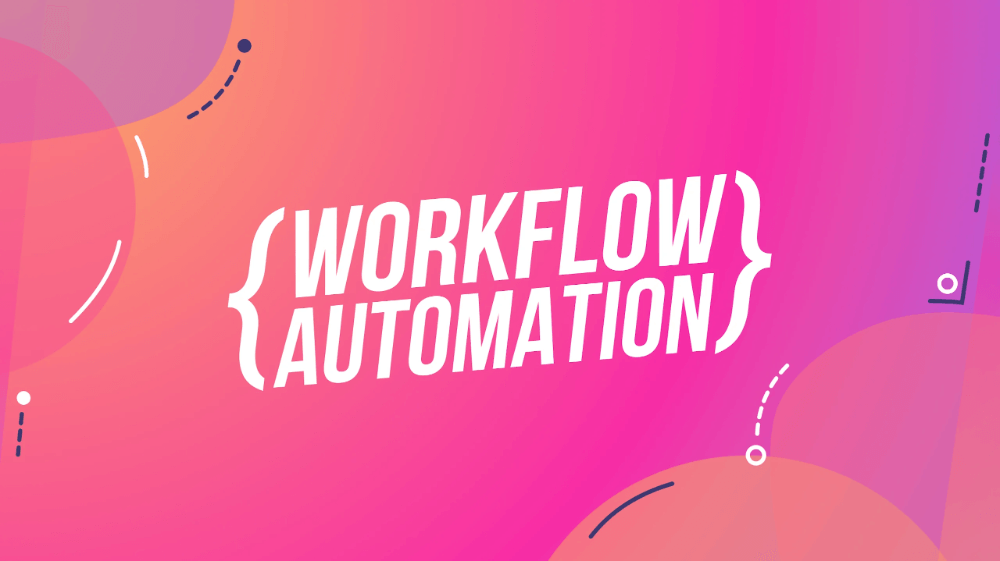📑Table of Contents:
- What Is an SMS Workflow?
- The Power of Automation in SMS Marketing
- Key Components of an SMS Workflow
- Common Types of SMS Workflows
- Tools and Architecture for SMS Automation
- Best Practices for Effective SMS Automation
- Combining Drip Campaigns with Triggered Texts
- Measuring Success
- Future of SMS Automation
- Final Thoughts

SMS marketing is no longer about one-off promotional blasts. In today’s fast-moving digital world, automation has changed everything. Businesses now use SMS workflows and drip campaigns to deliver personalized, timely, and behavior-based messages that build relationships instead of just driving sales. These automated text journeys guide customers through every stage of engagement—from welcoming them to reactivating dormant users.
In this detailed guide, we’ll explore what SMS workflows are, why they matter, how to use them, and which tools make automation effortless.
What Is an SMS Workflow?
An SMS workflow, also called a text automation flow, is a sequence of pre-set messages sent to subscribers based on time intervals, specific actions, or triggers. Think of it as a road map that guides your customer from point A to point B through thoughtful communication.
For example, when someone joins your SMS list, they can automatically receive a welcome text. A few days later, they might get a product recommendation or a discount. If they add something to their cart but don’t complete checkout, a follow-up reminder can go out automatically. That’s an SMS workflow in action.
Unlike manual texting, automated workflows save time, reduce errors, and ensure consistent communication with your audience. They create predictable yet personalized experiences that strengthen brand trust.
The Power of Automation in SMS Marketing
Automation allows you to stay connected with customers without needing to send every message manually. It also ensures no one falls through the cracks. When used strategically, SMS automation can deliver three major benefits:
- Consistency and Timing: Automated workflows guarantee that every subscriber receives the right message at the right time. This builds reliability and keeps engagement steady.
- Personalization at Scale: Automation tools can segment your audience and deliver personalized messages based on user behavior, preferences, or demographics. This creates relevance without adding manual effort.
- Improved ROI and Engagement: Because SMS has high open rates and fast response times, automated messages often lead to better click-through rates and sales conversions.
Automation isn’t just convenient—it’s essential for modern customer communication.
Key Components of an SMS Workflow
Every successful SMS workflow has a few core elements that determine how it performs. Let’s break them down:
- Triggers: A trigger is an action or condition that starts a workflow. It can be something simple like a new subscriber joining your list or complex like a customer viewing a specific product on your site.
- Timing: Timing defines when each message in the sequence gets delivered. You can set intervals such as immediately, after 24 hours, or after a week. The right timing helps messages feel natural instead of spammy.
- Message Content: Your messages must be clear, concise, and valuable. The tone should match your brand voice and offer a direct call-to-action (CTA). For example, “Hey Sam! You left your running shoes in your cart. Checkout now to get 15% off!”
- Logic Paths: Advanced workflows can include branching logic. That means messages change depending on user behavior. If a customer clicks a link, they receive one follow-up. If not, they get a different one.
Common Types of SMS Workflows
Different goals call for different workflows. Here are some of the most effective ones you can set up for your business.
Welcome Series
A welcome series is often the first workflow a new subscriber encounters. It introduces your brand, sets expectations, and encourages engagement from the start.
Example sequence:
- Message 1 (Instant): Welcome text with a discount code or greeting.
- Message 2 (Day 2): Introduction to your best-selling products.
- Message 3 (Day 5): Social proof or customer reviews to build trust.
This flow creates a strong first impression and helps move customers toward their first purchase.
Cart Abandonment Workflow
Cart abandonment is a major challenge in e-commerce. Automated SMS reminders can recover lost sales by nudging customers to finish their purchase.
Example sequence:
- Message 1 (After 1 hour): Gentle reminder—“Hey Alex, did something catch your eye? Your cart’s waiting for you!”
- Message 2 (After 24 hours): Include a small incentive like free shipping.
- Message 3 (After 48 hours): Create urgency with “Your cart expires soon!”
This sequence recovers a significant percentage of abandoned carts when combined with incentives and urgency.
Post-Purchase Follow-Up
Once a customer completes a purchase, your communication shouldn’t stop. A post-purchase workflow helps strengthen the relationship.
Example sequence:
- Message 1: Thank-you text with order confirmation.
- Message 2 (After delivery): Request feedback or a review.
- Message 3 (Later): Recommend related products.
This approach boosts repeat sales and encourages customer loyalty.
Re-Engagement Campaigns
When customers become inactive, automated SMS re-engagement workflows can win them back. A simple reminder or exclusive offer can reignite interest.
Example sequence:
- Message 1: “We miss you! Here’s 10% off your next purchase.”
- Message 2: “Still thinking about us? Your discount expires soon.”
- Message 3: “Final call! Last chance to claim your offer.”
Consistent re-engagement prevents churn and keeps your database active.
Event or Appointment Reminders
If your business runs appointments or events, SMS reminders are game changers. They reduce no-shows and keep clients informed.
Example sequence:
- Message 1 (Day before): Reminder with time and date.
- Message 2 (Morning of): Quick confirmation.
- Message 3 (After): “Thanks for coming—how was your experience?”
Automating this process saves staff time and enhances customer experience.
Tools and Architecture for SMS Automation
Building SMS workflows doesn’t have to be complicated. Many tools allow you to design automation visually, using drag-and-drop interfaces. The right software should integrate with your CRM, e-commerce, or email platforms.
Top tools for SMS automation include:
- Klaviyo – Great for e-commerce, with strong integrations for Shopify and WooCommerce.
- Brevo (formerly Sendinblue) – Offers flexible workflow automation and segmentation features.
- Twilio – Developer-friendly API for complex, customizable workflows.
- ClickSend – Simplifies SMS automation for marketing, alerts, and reminders.
- Attentive – Focused on retail automation with advanced personalization.
- Omnisend – Combines SMS and email in seamless omnichannel workflows.
When designing your architecture, focus on integration. Connecting your SMS platform to CRM data or sales systems ensures each message feels personal and timely. You can even combine SMS with email or push notifications for more robust communication flows.
Best Practices for Effective SMS Automation
Automation only works well when your strategy aligns with customer expectations. Here are proven practices that keep your workflows engaging and compliant.
- Start Simple, Then Scale: Begin with one or two essential workflows—like welcome and cart recovery. Once you see results, expand into re-engagement and post-purchase flows.
- Keep Messages Short and Clear: Texts should be under 160 characters. Say what’s important first, and end with a strong CTA. For example, “Your trial expires today. Upgrade now and save 20%.”
- Maintain a Friendly, Consistent Tone: SMS feels personal. Write as if you’re speaking to a friend. Keep it conversational, not robotic.
- Add Value Every Time: Every message should serve a purpose—save time, deliver deals, or provide reminders. Avoid sending texts just to fill space.
- Respect Frequency and Timing: Too many messages can annoy subscribers. Space out your workflow so users don’t feel bombarded.
- Test and Optimize: Use A/B testing to find what works. Test timing, offers, or copy variations. Monitor metrics like click-throughs and opt-outs to refine your approach.
- Stay Compliant: Always follow SMS marketing regulations. Include opt-out instructions and never message customers who haven’t consented.
Combining Drip Campaigns with Triggered Texts
The smartest marketers blend both drip and triggered campaigns. Drip campaigns nurture leads over time through scheduled sequences. Triggered texts react instantly to real-world behavior—like signing up, purchasing, or abandoning a cart.
For example:
- Drip series: Welcomes and educates new subscribers.
- Triggered text: Sends an instant thank-you after purchase.
When these two work together, they create seamless customer journeys. A drip flow builds relationships, while triggers deliver personalization at key moments.
Measuring Success
Once your workflows are live, track metrics to measure performance. Key SMS automation KPIs include:
- Delivery rate: Ensures messages reach users.
- Open rate: Indicates engagement quality.
- Click-through rate: Tracks CTA effectiveness.
- Conversion rate: Measures actual sales or desired actions.
- Opt-out rate: Helps detect fatigue or message missteps.
Consistently analyze your data and optimize weak spots. This continuous improvement cycle helps you refine messaging and improve overall ROI.
Future of SMS Automation
SMS automation continues to evolve with AI, predictive analytics, and smarter segmentation. Soon, businesses will use machine learning to predict user behavior and adjust message timing or offers dynamically. This future of hyper-personalized communication promises even stronger engagement and retention.

Final Thoughts
SMS workflows and automation have transformed the way brands communicate. Instead of sending one-time messages, businesses can now create full customer journeys that guide, convert, and retain users. With the right tools, strategy, and compliance, automated SMS campaigns can deliver measurable growth and meaningful connections.
If you’re not automating your SMS marketing yet, now’s the time to start. Begin small, stay consistent, and keep optimizing. Soon, your automated workflows will run like a well-tuned machine—nurturing leads, recovering carts, and building loyal customers.
